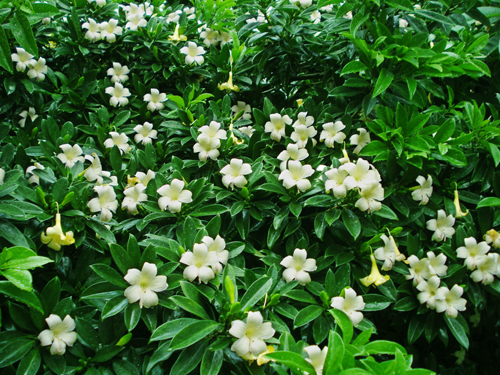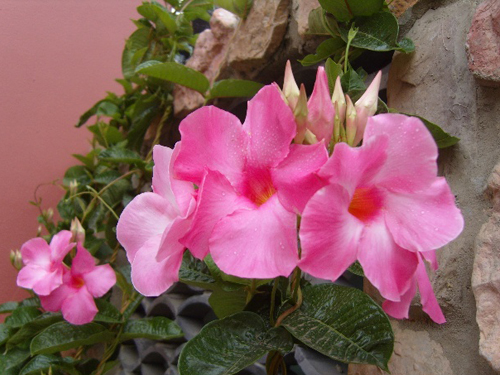Maintenance methods of Boston fern (Dryopteris crinkle)
Boston fern
Scientific name: nephrolepis exaltata 'bostoniensis'
Description: Small terrestrial or epiphytic ferns. Leaves clustered, -pinnate, slightly pendulous; lobes margin distinctly undulate, apex twisted, pale green.
Ecological habits: like high temperature, high humidity and semi-shady environment, not cold. The suitable temperature for growth is 15~25 degrees Celsius, and it can safely overwinter in winter above 10 degrees Celsius.
Flowering: View leaves.
Floral language: rich, satisfied.
Garden use: pendulous fern foliage plants, suitable for potted indoor hanging ornamental, potted plants and vertical greening, its creeping branches can be cut as decorative configuration materials. Boston ferns absorb about 20 micrograms of formaldehyde per hour and are considered the most effective biological "purifiers." Can remove: toluene, toluene, formaldehyde.

Nephrolepis auriculata (L. Trimen): epiphytic or native. Rhizome erect, fluffy pale brown long subulate scales, lower part with thick wire-like stolons spreading horizontally, stolons brown, unbranched, sparsely scaly, with slender brown-brown whiskers. Photo Gallery
Kidney ferns are epiphytes or native plants. Rhizomes erect, fluffy pale brown long subulate scales, lower part with thick wire-like stolons spreading horizontally, stolons brown, ca. 1 mm thick, up to 30 cm long, unbranched, sparsely scaly, with slender brownish fibrous roots; stolons bearing subrounded tubers, 1-1.5 cm in diam., densely scaly with the same scales as rhizomes.
Price of kidney fern
1, Boston fern kidney fern spider plant potted green plant flowers purify air formaldehyde absorption Pteris vittata, the price is about 12 yuan.
2, Boston fern kidney fern potted l green plant indoor plants purify air formaldehyde absorption Pteris vittata Adiantum, the price is about 11 yuan.
3. Boston fern indoor plants purify air potted plants absorb formaldehyde flowers and plants Adiantum nephrolepis chlorophyllin radiation protection, the price is about 20 yuan.
Nephropteris culture
1. Soil: Nephropteridium suitable for growth in the appropriate drainage unobstructed, rich in humus loose fertile soil. The culture soil can be made up of 4 parts of decaying leaf soil, 4 parts of vermiculite and 2 parts of river sand, or mixed with decaying leaf soil or peat soil and a small amount of river sand. Because of the shallow root distribution of Nephropteridium, it is appropriate to use shallow pot planting.
2. Sunlight: kidney fern likes bright scattered light, spring, summer, autumn three seasons can be placed indoors north window maintenance, but pay attention to ventilation. When placed outdoors, it should be placed under shade to avoid direct sunlight. If the light is too strong, the leaves are easily scorched yellow. If the kidney fern is too shaded, the pinna leaves are easy to fall off. 3. Watering: In addition to keeping the pot soil moist in summer, it is necessary to spray water on the leaves of Nephrolepis 2-3 times a day to increase the air humidity in order to keep the leaves green.
Related encyclopedias
Pocket scale non-woven bag lamp grass bamboo shoots crab feet red rice note3ykk zipper ybs zipper mountain cherry climbing wall plum wild cassia winter plum pine watch Omega Longines famous watch children's building blocks flint azalea orchid roll stick thorn fruit Annona
How does the Boston fern breed?
Boston fern is a kind of pendulous fern foliage plant, Nephropteridium is perennial evergreen herb of Nephropteridaceae, originated in tropical and subtropical regions, distributed in Taiwan Province of China, with very high ornamental value, suitable for potted plants hanging indoors for ornamental, potted plants and vertical greening, and its creeping branches can also be used as decorative configuration materials. Let's take a look at the cultivation methods of Boston fern together!
Growth Habits of Boston Fern
Boston fern likes warm, humid and semi-shady environment, and likes ventilation, avoid extreme heat. Generally placed in the room bright scattered light culture, can not be exposed to direct light, but also can not be placed in the dark place culture. The suitable temperature for growth is 15~25℃, and it can safely overwinter above 10℃ in winter. Drought-resistant, but still need sufficient water, and should not be too wet or too dry, to keep the basin soil often moist. Watering 1 to 2 times a day in summer, often spraying water on leaves. Not much fertilizer is required. Thin decomposed cake fertilizer can be applied once every 4 weeks during the growth period. Quick-acting chemical fertilizer should not be used. Do not contaminate the leaves when fertilizing, so as not to damage them.
Boston Fern's Breeding Methods
Boston ferns do not produce sporophylls and can only reproduce by ramets or walking stems. Plant division method propagation in spring, summer, autumn can be, from the vigorous growth of plants cut off the stolon on the small plants with roots, planting separately can be. The plants planted separately are watered thoroughly and placed in the shade for about a week before they can be transferred to normal maintenance.
Bostonfern breeding methods
1, substrate: Boston fern culture substrate with loose, drainage and good ventilation Pinshi 10~30 mm specifications of imported peat, peat broken and mixed with water, mixed with water, hold a handful of peat, water oozes from the fingers, wait for the cup planting. 12 cm pots of peat per pot about 350 ml, a packet of 300 liters of imported peat can hold about 800 cups.
2, the upper pot: Boston fern upper pot to choose professional production of high-quality seedlings, seedling height 7~8 cm, crown width 4~5 cm, no pests, no dead leaves, yellow leaves. The upper pot is planted with 12 cm pots, 1 group/pot, planted for 3~4 months. Then change to 18 cm pots, planting 6~7 months can be shipped.
3, temperature: Boston fern suitable temperature is 18~35℃, higher than 35℃ or lower than 15℃ are poor growth, winter can not be lower than 5℃, winter maintenance needs heating equipment, if no heating facilities, can use double-layer insulation facilities, winter afternoon in the temperature dropped to 22~24 degrees to seal the shed in time, summer maintenance needs cooling equipment (exhaust fan and water curtain).
4, light: Boston fern likes bright scattered light, spring and summer should be placed indoors with bright scattered light, when the sun is strong can not be placed in direct sunlight, direct sunlight leaves will turn yellow. Winter should be appropriate to increase the light, otherwise the leaf color easy to turn yellow or lead to leaf edge dry.
Moisture: Boston ferns like humid environments and require higher soil moisture and air humidity. Because Boston fern roots are adventitious roots, water absorption, water retention capacity is poor, must be timely supply of water, otherwise dry too long easy to cause leaves yellow fall off. Spring and summer basin soil should always keep wet, but can not accumulate water, should not be too wet, in order to often keep the basin soil wet state is better, summer in addition to timely watering, but also often spray water to the leaves. In winter, when the room temperature is low, reduce watering and keep the soil slightly moist.
6, fertilization: Boston fern fertilizer concentration should not be too high, otherwise it is easy to hurt the roots, the best way to fertilize is to add decomposed manure in the pot (every other year in the spring), in the growth season, and then thin fertilizer topdressing. When fertilizing, avoid contaminating the leaves with fertilizer solution. If it is accidentally contaminated, spray clean water immediately.
- Prev

Culture methods of ash (ash wood, African jasmine)
Ash (ash, African jasmine) scientific name: fagraeaceilanica morphological characteristics: evergreen (climbing) shrub or small Qiao. Leaves opposite, elliptic, apex protruding. Full margin, fleshy, dark green surface. Flowers solitary or cymose Cymes, Corolla funnelform, 5-lobed, white
- Next

Culture method of Tripterygium wilfordii (double Xi Teng, Wen Teng, Red Cicada)
The scientific name: mandevillasanderi alias: Tripterygium rubrum, Tripterygium biglandulum, Scutellaria angustifolia, Wenteng, Cicadaceae: Apocynaceae morphological characteristics: perennial evergreen vines, slender rhizomes. Leaves opposite, long ovoid, apex acute, leathery
Related
- Fuxing push coffee new agricultural production and marketing class: lack of small-scale processing plants
- Jujube rice field leisure farm deep ploughing Yilan for five years to create a space for organic food and play
- Nongyu Farm-A trial of organic papaya for brave women with advanced technology
- Four points for attention in the prevention and control of diseases and insect pests of edible fungi
- How to add nutrient solution to Edible Fungi
- Is there any good way to control edible fungus mites?
- Open Inoculation Technology of Edible Fungi
- Is there any clever way to use fertilizer for edible fungus in winter?
- What agents are used to kill the pathogens of edible fungi in the mushroom shed?
- Rapid drying of Edible Fungi

